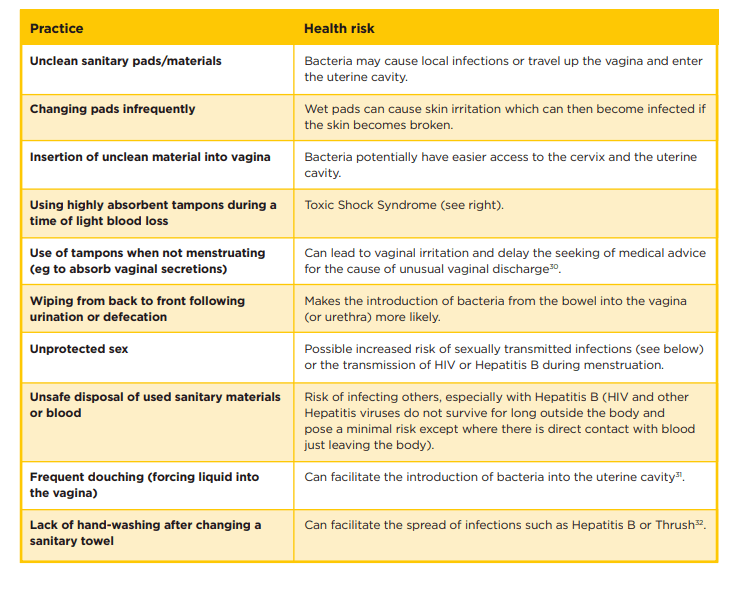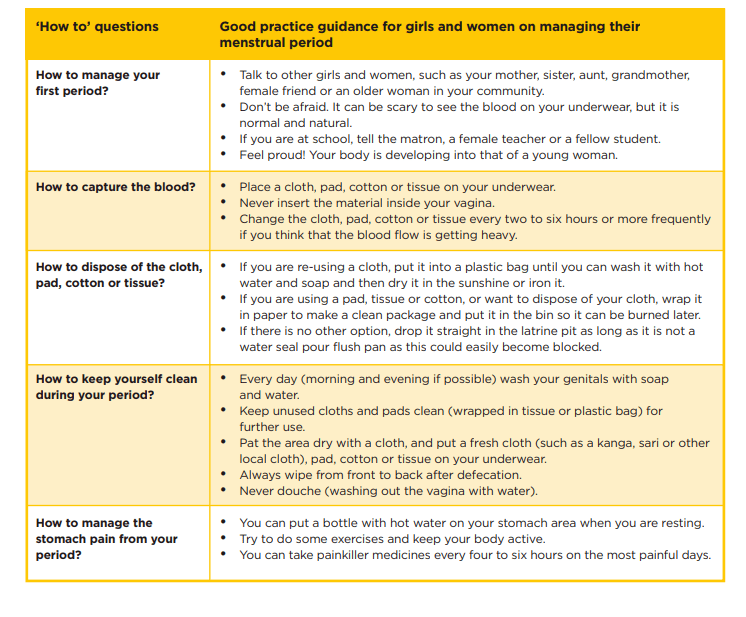
What is Menstrual Hygiene?
What is Menstrual Hygiene?
With an estimated 52% of women being at reproductive age, it is not surprising that 26% will menstruate each month for between two and seven days. Menstruation has been a natural part of the female cycle since time immemorial; however, in many parts around the world talking openly about this topic remains tabu which makes practical challenges even more difficult due to socio cultural factors
such as religion or culture traditions where girls are taught from early on what their bodies should never do – bleed during clothing since if they do then there must be something wrong with them.
Menstruation is a natural part of the reproductive cycle, in which blood is lost through the vagina. However, in most parts of the world, it remains taboo and is rarely talked about. As a result, the practical challenges of menstrual hygiene are made even more difficult by various socio-cultural factors.
To manage menstruation hygienically, it is essential that women and girls have access to clean water and sanitation. They need somewhere private to change sanitary cloths or pads; clean water for washing their hands and used cloths; and facilities for safely disposing of used materials or a place to dry them if reusable. There is also a need for both men and women to have a greater awareness of menstrual
hygiene. Currently, cultural practices and taboos around menstruation impact negatively on the lives of women and girls, and reinforce gender inequities and exclusion.
Menstrual hygiene has been largely neglected by the water, sanitation and hygiene (WASH) sector and others focusing on sexual and reproductive health, and education. As a result, millions of women and girls continue to be denied their rights to WASH, health, education, dignity and gender equity. If the situation does not change, it may not be possible for development programmes to achieve their goals.
What is the impact of Menstrual Hygiene on women and girls?
Impact on health
Menstruation is a natural process; however, if not properly managed it can result in health problems.
Reports have suggested links between poor menstrual hygiene and urinary or reproductive tract infections and other illnesses. Further research and robust scientific evidence are needed in this area. The impact of poor menstrual hygiene on the psychosocial wellbeing of women and girls (eg stress levels, fear and embarrassment, and social exclusion during menstruation) should also be considered.
Potential health risks of poor menstrual hygiene
It is assumed that the risk of infection (including sexually transmitted infection) is higher than normal during menstruation because the plug of mucus normally found at the opening of the cervix is dislodged and the cervix opens to allow blood to pass out of the body.
Certain practices are more likely to increase the risk of infection. Using unclean rags, especially if they are inserted into the vagina, can introduce or support the growth of unwanted bacteria that could lead to infection.
Some girls and women may roll up sanitary pads and insert these into the vagina. Prolonged use of the same pad will also increase the risk of infection. Douching (forcing liquid into the vagina) upsets the normal balance of yeast in the vagina and makes infection more likely.
Wiping from back to front following defecation or urination causes contamination with harmful anal bacteria, such as Escherichia coli (E.coli), which can also be transmitted from the rectum to the urinary tract and/or vagina during sex.
Infections related to the reproductive tract
Girls and women may be more at risk of infections during menstruation. Some of the common infections associated with the reproductive tract are noted below:
• Bacterial Vaginosis
• Vulvovaginal Candidiasis (Thrush)
• Chlamydia
• Trichomonas Vaginalis
• Gonorrhoea
• Syphilis
• Hepatitis B
• HIV
• Urinary tract infections
• Pelvic Inflammatory Disease
• Vaginitis
While menstruation may make a girl or woman more susceptible to infection, sexually transmitted infections (STIs) only occur through having unprotected sex. The term reproductive tract infection (RTI) includes sexually and non-sexually transmitted infections.
Other conditions sometimes associated with menstruation
Endometriosis
• Fibroids
• Ovarian Cancer
• Toxic Shock Syndrome
• Complications due to female genital mutilation/female genital cutting
• Pubic lice and Scabies
How women and girls can keep themselves healthy during their menstrual period
If you would like more information on menstrual hygiene please speak to one of our pharmacists at Asset Pharmacy.
References:
WaterAid – The advocacy sourcebook
SHARE (Sanitation and Hygiene Applied Research for Equity),
Crofts T (2011) Will they cotton on? An investigation into schoolgirls’ use of low-cost sanitary pads in Uganda. MSc Water and Environmental Management (2009/10) WEDC, Loughborough University, UK.


